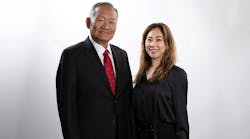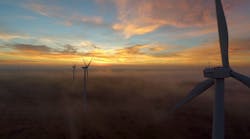While visiting with Steve Espinosa of The Lighting Company, Irvine, Calif., in my research for this month's cover story, “The Lighting Edge,” (page 26), I was amazed to learn how far energy-saving lighting products have come over the past few years. When his company helps end users in SoCal slash building operating costs by pulling out “old” T8 lighting systems with electronic ballasts and replacing them with new T8s and electronic ballasts, the payback can be as little as two years.
Old T8s? That blows my mind. I always thought they were pretty close to the cutting edge of lighting technology, but that's apparently not the case in a lighting market where a nonstop parade of new products produce better light more efficiently. Espinosa estimates 50 percent of the products his company sold last year didn't even exist five years ago.
That's an astounding rate of new product development. What's behind all of this momentum in the energy-conservation movement? Here's a list from A-Z of the people, products, companies and ideas now fueling the growth.
A. “An Inconvenient Truth,” Al Gore's thought-provoking movie about global warming and the environment, won Oscars this year for best documentary and best song.
B. Bernie Erickson gets more excited about the sales opportunities in the lighting retrofit market than anyone I know. The subject of EW's July 2006 cover story, he recently sold his company, O.K. Electric Supply, Perth Amboy, N.J., to Facility Solutions Group (FSG) an energy-service company (ESCO) based in Austin, Texas. FSG wants to take Bernie's approach and roll it out nationwide.
C. Compact fluorescent lamps (CFLs) last 8,000 hours and more and are an easy replacement for incandescent lamps.
D. Daylighting systems, dimmers and data loggers all play an important role slashing electrical bills.
E. Energy-service companies(ESCOs) focus on the design and installation of energy-efficient products and systems such as lighting, HVAC, windows and roofing for end users.
F. FSLR is the stock symbol for First Solar, a hot stock. First Solar's photovoltaic panels utilize a thin-film semiconductor technology.
G. Green is good these days. What else can you say?
H. High-intensity discharge (HID) lighting will enter a new era when more efficient electronic ballast replace their electromagnetic ballasts. Industry experts say they aren't too far away.
I. Incandescent lamps will be outlawed in Australia. According to a recent report in the Sydney Morning Herald, the country's environment minister, Malcolm Turnbull, wants to phase out incandescent light bulbs by 2009-2010. California has similar plans. California Assemblyman Lloyd Levine recently introduced a bill, the “How Many Legislators Does it Take to Change a Light Bulb Act,” which bans incandescent light bulbs by 2012 in favor of energy-saving compact fluorescents.
J. Juice is a nickname for electrical power, of course, which by now everyone should want to save.
K. California utilities are penalizing customers by the kilowatt when they operate buildings during peak-demand period — noon to 6 p.m. — in a program now in test mode in some markets.
L. LEED stands for Leadership in Energy Efficient Design, the building design standards developed by the U.S. Green Buildings Council that act as a Good Housekeeping seal of approval in this market. Also see light-emitting diode (LED) and lumens-per-watt, a measure of lighting efficiency.
M. California's Million Roofs Initiative is meant to encourage the installation of photovoltaic panels in new residential housing developments.
N. The National Lighting Bureau's Web site at www.nlb.org is a good resource for lighting professionals.
O. Occupancy sensors have been around for years, but the electrical regulations in the Title 24 energy code and the federal energy bill have created plenty of new market opportunities.
P. Photovoltaic panels convert the sun's rays into electricity.
Q. Quality lighting is much easier to obtain because of all the R&D in the lighting market.
R. Renewable resources such as solar and wind energy are in the news more than ever and seem to have permeated the general public's consciousness.
S. California Governor Arnold Schwarzenegger has helped the Golden State reduce its appetite for electricity. He has solar panels on his house, signed a bill to reduce the state's greenhouse gas emissions by 25 percent by 2020 and according to a Fortune article, retooled one of his Hummers to run on hydrogen.
T. Ted Turner is another unlikely green advocate. He made headlines earlier this year when he announced he will partner with Dome-Tech Solar, a leading solar energy developer, based in Branchburg, N.J., to create DT Solar, a Turner renewable energy company. DT Solar will initially focus on providing on-site solar electric power systems for commercial and industrial clients, as well as developing larger, utility-scale solar power plants in the southwestern United States.
U. Utility-rebate programs are back. Check out Electrical Wholesaling's February issue or type “rebate resource” into the search engine on www.ewweb.com to see if a utility near you offers cash rebates for the installation of energy-efficient electrical products.
V. Virgin Airlines' founder and chairman Richard Branson, is installing wind mills, photovoltaic panels and possibly wave power to serve all of his electrical needs on his two private islands in the British Virgin Islands, according to a recent article in Fortune magazine.
He also recently announced a $25 million prize, the “Virgin Earth Challenge,” for any person or company who comes up with a workable plan to remove greenhouse gases from the atmosphere. Guess who is one of the judges for the competition? Yep. Al Gore.
W. Wind energy provides 20 percent of the power for the Netherlands and Germany. It's growing in popularity in the United States, and since 1999, wind power installations have increased 500 percent to 11,600 megawatts, enough electricity to power 2.5 million homes.
X. X-rays are actually a form of light that reside at low end of the electromagnetic spectrum between gamma rays and ultraviolet rays.
Y. Young lighting designers in Europe may want to check out the European Lighting Designers Association (ELDA) at www.eldaplus.org. ELDA+ Vox Juventa is an educational conference organized by ELDA+ to promote young lighting designers.
Z. Whoever develops a technology that breaks the world's addiction to oil as its primary fuel source will be a zillionaire.








